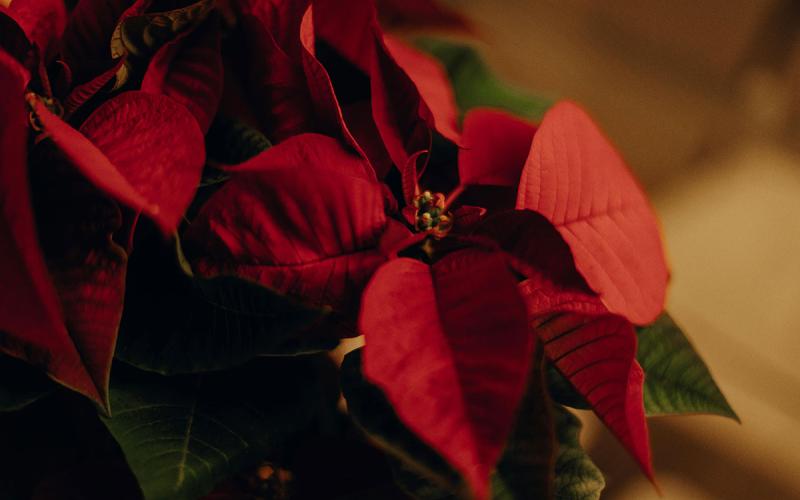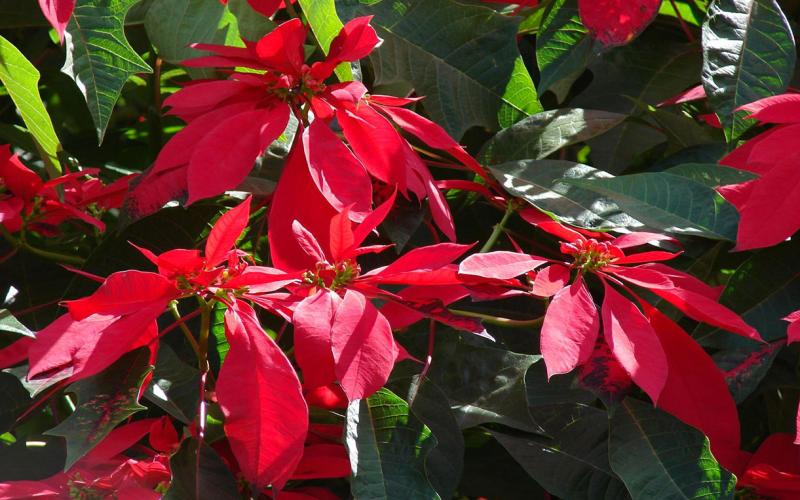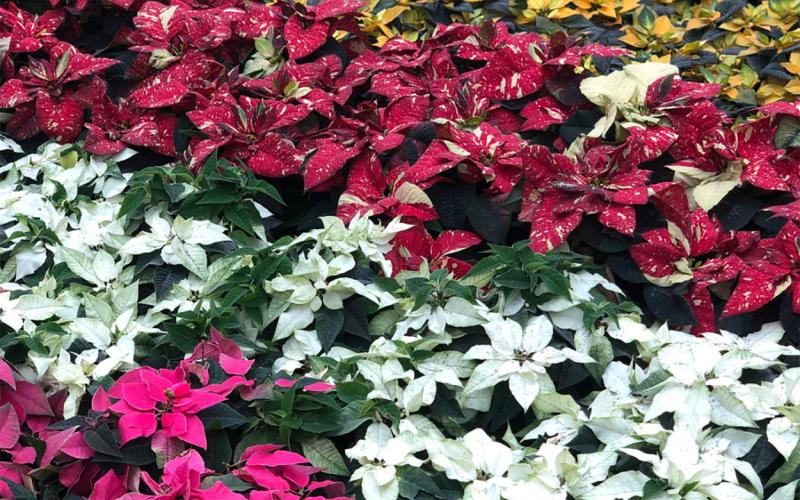Original article by David Graper, former SDSU Extension Horticulture Specialist and Master Gardener Program Coordinator. Updated by Vaughn Reints, SDSU Extension Horticulture Assistant; and Kristine Lang, Assistant Professor, Agronomy, Horticulture, and Plant Science. Special thanks to SDSU Extension Master Gardener Trainee, Max Peterson, for editorial review of this article.

Poinsettias are a favorite perennial for holiday decorations and remain one of the best-selling potted plants in the United States, even though they’re only available for a short period each year. Choosing the right poinsettia can help it last well into the season and knowing how to care for it can keep it looking its best. For advice on selecting a healthy plant and keeping it thriving, see the article, Poinsettias: Selecting and Caring for the Most Popular Holiday Plant.
Although many poinsettias are discarded after the holidays, they can still be rewarding to keep around with the right care and even getting them to rebloom again the following year. However, they aren’t always the easiest plant to maintain. Many people find that their poinsettia starts losing leaves or turning scraggly by the time Spring arrives. If not ready for the challenge, consider replacing it with a fresh plant next season, rather than attempting to revive it.
If you enjoy the challenge, keep in mind that reblooming isn’t easy—it takes careful attention to the plant’s light exposure to mimic the shorter days that trigger flowering, a process governed by photoperiodism. To learn more about the process of photoperiodism, see the article, Are You Photoperiodic? Poinsettias Are: An Explanation of This Unique Plant Process. If you’re looking for long-term houseplants, exploring other Euphorbia species such as (Euphorbia pulcherrima) may also be a good option.
Some relatives of poinsettia (Euphorbia pulcherrima) are excellent additions as houseplants. In warmer climates (USDA Zones 9-11), poinsettias can even grow as outdoor perennials, adding vibrant color to gardens throughout the year. In colder regions, however, replacing them with a fresh plant each season might be the simplest option. Poinsettias all share some common characteristics, like a milky sap in the stems and leaves, and strange-looking flowers called cyathia. The red color on poinsettia comes from colored leaves, called bracts, which change color when the day lengths get short in Fall. The true flowers are small round structures in the center of the bracts.
Euphorbias to Consider
Baseball Plant
(Euphorbia obesa)
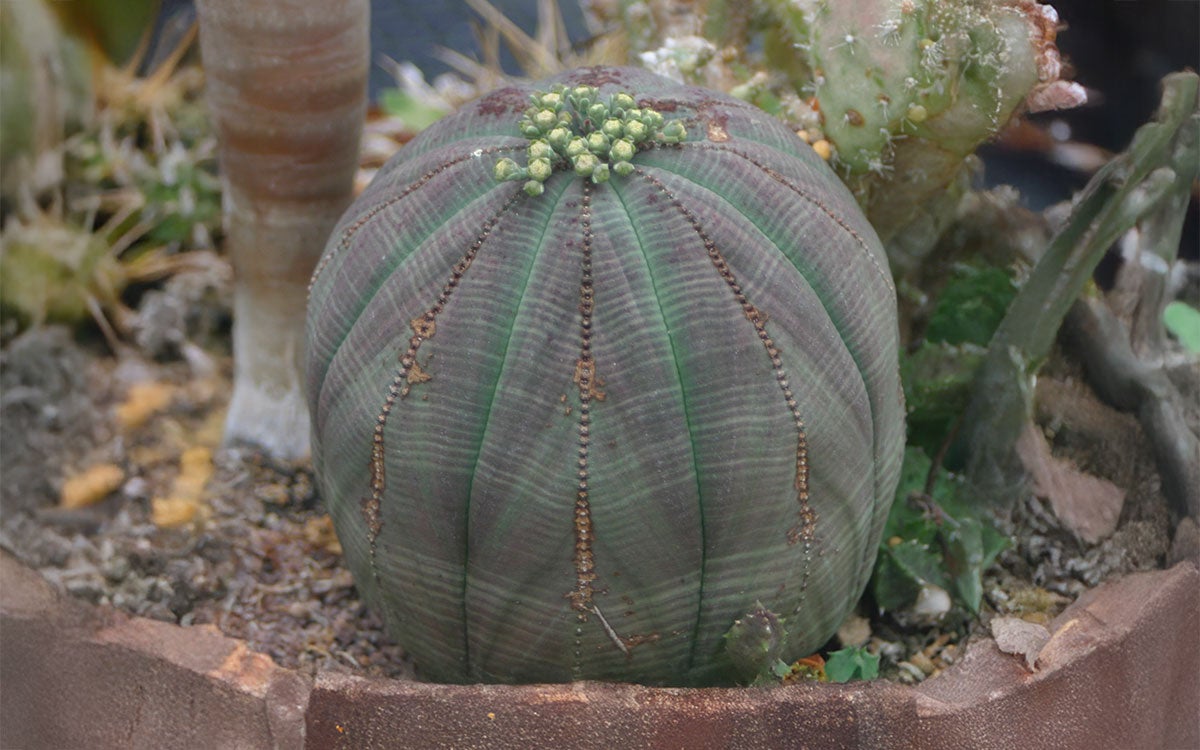
The baseball plant (Euphorbia obesa) is a fascinating member of the Euphorbia family. Its species name, “obesa,” makes perfect sense once you see it—its shape is nearly perfectly round, like a baseball. The plant’s blue-green color is complemented by small patches of striations, giving it a quilted appearance. It only flowers occasionally, and the blooms are so subtle they’re easy to miss. What makes this plant even more unique is that it typically doesn’t grow leaves, at least not in the way most plants do. As a slow-growing succulent, it thrives in full sun and requires minimal care, making it a great addition for collectors and those new to succulent care.
Crown of Thorns Plant
(Euphorbia milii)
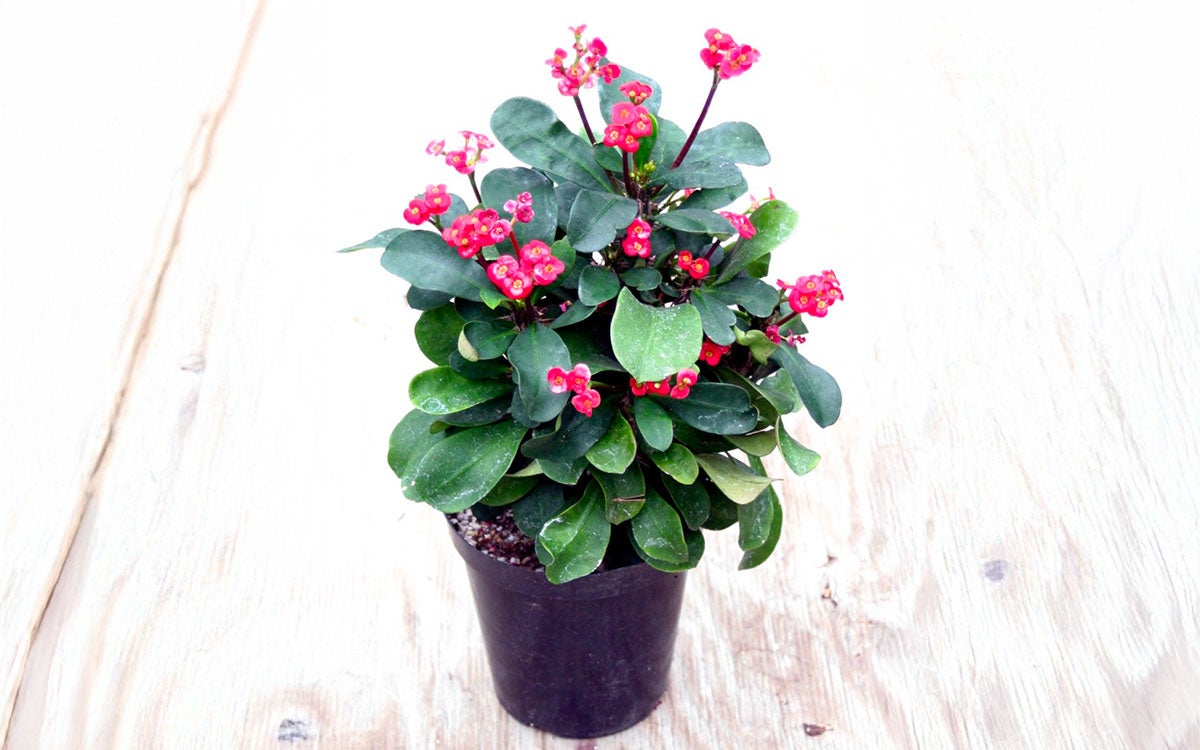
Another indoor plant that is popular is the crown-of-thorns, or Euphorbia milii. This plant is aptly named, because the stems are covered in spines of nearly an inch long. It can often be found for sale seasonally in Spring for Easter, but it can also be a long-lived plant. The Euphorbia milii usually has leaves, at least on the top inch or two of the stems. The actual flowers are much showier than on most Euphorbias. They are usually about ½-inch in diameter, often form in clusters on stems about 2 inches long, and range in color from creamy-white to red and pink.
African Milk Barrel
(Euphorbia horrida)

There are lots of other types of Euphorbias that can be grown as houseplants in this region, or as outdoor plants in warmer climates. Most are types of succulents that can withstand periods of drought or no watering in the home for weeks. One worth mentioning is Euphorbia horrida. This plant looks like a small cactus with many roundish plants that usually grow around a larger central plant. The plants are ripped, and usually have short, spine-like projections along the ribs. Minute leaves and flowers might be seen occasionally at the ends of the “spines” or closer to the ribs of the plant itself. It is also a slow-growing plant that will live in a 6-inch pot for many years.
Cushion Spurge
(Euphorbia Polychroma)
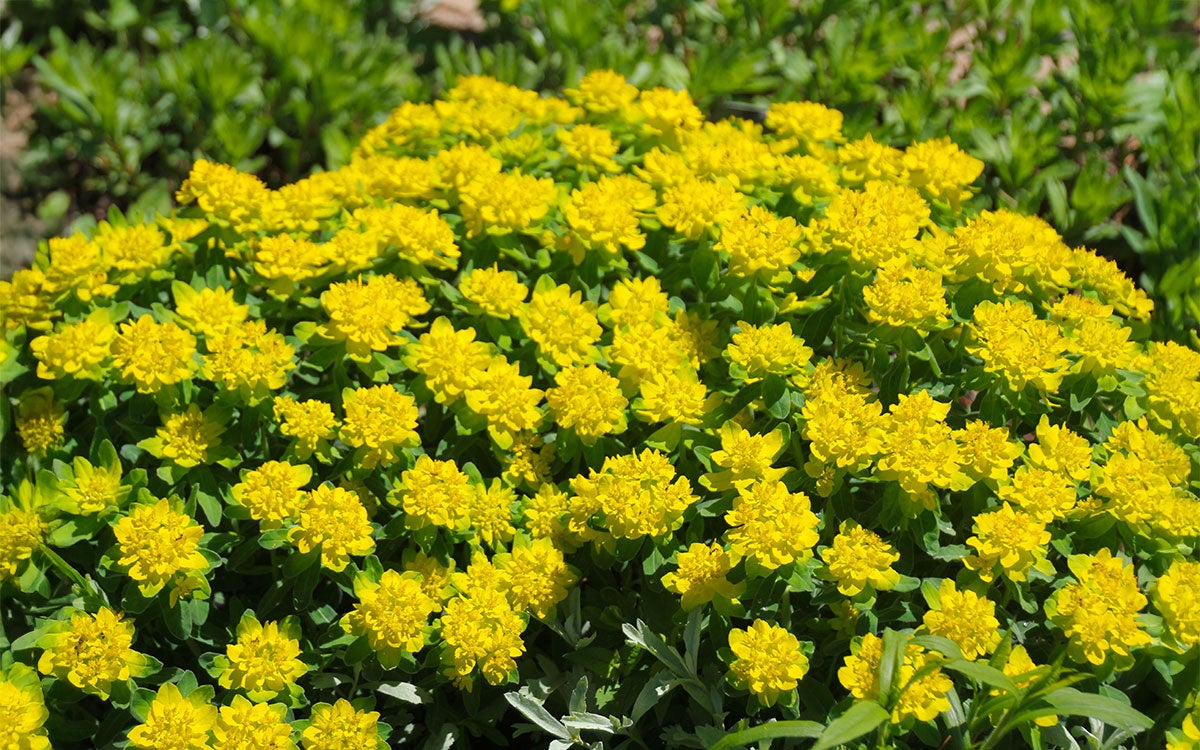
Some Euphorbias, such as Euphorbia polychroma, or cushion spurge, can also be great plants in the garden. This is a green, bushy plant that emerges fairly early in Spring. It grows to nearly a foot tall and round, with medium green foliage. Around late April or early May, it begins to flower, and the upper leaves turn bright yellow, much like how a poinsettia’s upper leaves turn red. The display lasts for several weeks before the yellow color fades. Like the poinsettia, its true flowers are understated, with no petals or sepals. It still produces seeds, however, and can spread throughout the garden.
Additional Euphorbias to Consider
Some Euphorbia species are hardy-enough to grow in this region, with most valued for their colorful and unique foliage. One relatively new addition is Euphorbia graminea (also known as Euphorbia hypericifolia), often sold under names like ‘Diamond Frost’ or ‘Angel Frost.’ Typically offered as a bedding plant in Spring, it performs well in both containers and in garden beds. In containers, it tends to perform best with well-drained soil. This plant tolerates drought, thrives in full sun, and produces a profusion of tiny white flowers throughout Summer.
When working with Euphorbias, handle the plants with care. The milky sap produced by many species can cause skin irritation, or more severe reactions in sensitive individuals. Wear gloves and protective eyewear when pruning or repotting. Eye contact with the sap can lead to serious injuries, so immediately rinse with water, and seek medical attention.
Euphorbias are versatile plants, with species suitable for both indoor and outdoor environments. Whether used as decorative houseplants, or as garden perennials, these plants offer a unique aesthetic, and require minimal care, making them an appealing choice for novice and experienced gardeners alike.
